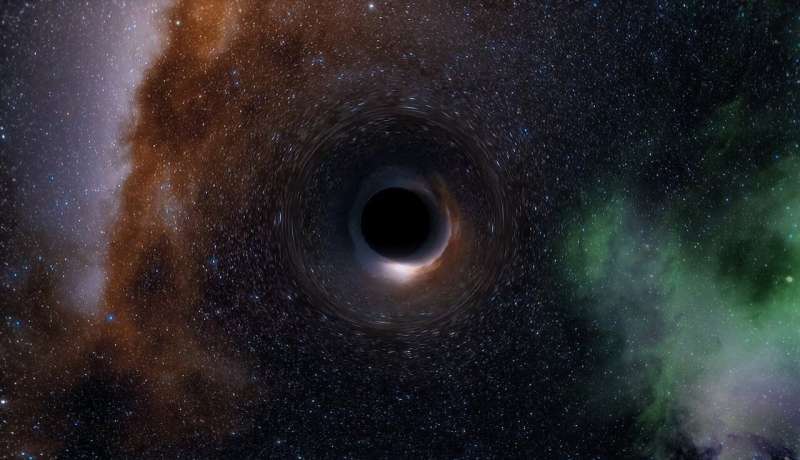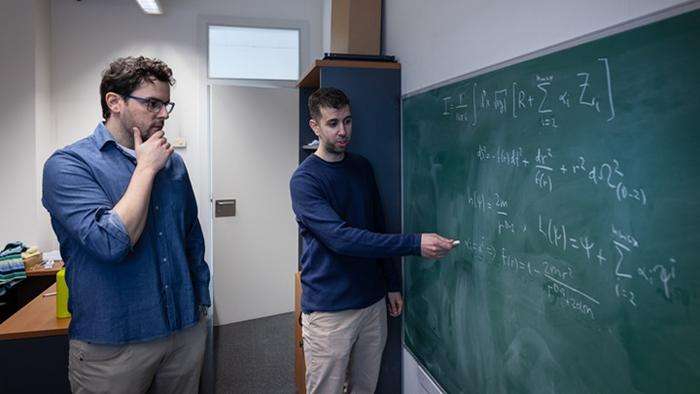Black Hole Breakthrough by ICCUB: Higher-Order Gravitational Corrections Remove Singularities
Recent research from the Institute of Cosmos Sciences at the University of Barcelona (ICCUB) has introduced a groundbreaking mathematical framework that redefines our understanding of black hole formation. This study suggests that black holes can emerge purely from gravitational effects, challenging long-standing beliefs about the necessity of exotic matter and singularities in black hole physics. The implications of these findings could significantly alter our comprehension of the universe and its fundamental laws.
Key Points of Research by ICCUB
- Singularity-Free Black Holes: The research introduces the concept of regular black holes that do not contain singularities, marking a significant shift from conventional black hole models.
- Elimination of Exotic Matter: Unlike previous theories that necessitated exotic matter with unusual properties, this new model relies solely on pure gravity.
- Mathematical Framework: The study utilizes an infinite series of higher-order gravitational corrections, demonstrating that these modifications can effectively eliminate singularities.
- Thermodynamic Consistency: The researchers confirm that the newly proposed black holes adhere to the first law of thermodynamics, reinforcing the validity of their findings.
- Future Research Directions: The researchers intend to extend their work to explore implications in four-dimensional space-time and investigate the stability and observational signatures of these regular black holes.

Singularities in Black Holes
To grasp the significance of this recent discovery, it is important to reflect on the traditional understanding of black holes. Established models grounded in Einstein’s General Relativity suggest that black holes contain singularities at their cores. These singularities are points where gravitational forces are so extreme that spacetime is infinitely warped, rendering the current laws of physics, including quantum mechanics, incapable of explaining the phenomena occurring in these regions.
Although singularities are theoretically possible, they pose significant challenges in physics. A core issue revolves around the fate of information about matter falling into a black hole. Does the matter vanish, suggesting a breakdown of the laws of physics, or is there a way to unify the two dominant frameworks of modern physics: General Relativity and quantum mechanics?
Many researchers theorize that quantum gravity, a conceptual framework aiming to integrate these two paradigms, could provide a solution. Nonetheless, the exact processes through which singularities might be addressed remain speculative and poorly understood.
Discarding Exotic Matter
Exotic matter refers to a hypothetical form of matter with distinctive properties that differentiate it from ordinary matter. It is characterized by features such as negative energy density, the ability to produce repulsive gravitational effects, and the potential to violate certain energy conditions outlined in general relativity. While exotic matter has not been observed in nature, it plays a key role in theoretical models addressing phenomena like wormholes, faster-than-light travel, and the solutions to black hole singularities.
The recent study presents a mathematical approach indicating that an infinite sequence of higher-order gravitational corrections could resolve these singularities, leading to what are termed regular black holes. Unlike earlier models that relied on exotic matter, this research demonstrates that regular black holes can arise purely from gravity, with no need for additional matter fields. This breakthrough marks a significant departure from prior theories, streamlining the conditions required for the existence of singularity-free black holes.
This discovery represents a significant departure from previous theories and simplifies the conditions necessary for regular black holes.
“The beauty of our construction is that it is based only on modifications of the Einstein equations predicted naturally by quantum gravity. No other components are needed,” says researcher Pablo A. Cano, from the Department of Quantum Physics and Astrophysics at the Faculty of Physics and ICCUB.
The theories deployed by the ICCUB team are applicable to any dimension of space-time greater than or equal to five. “The reason for considering higher space-time dimensions is purely technical,” says Cano, “as it allows us to reduce the mathematical complexity of the problem.” However, the researchers say that “the same conclusions should apply to our four-dimensional space-time.”
“Most scientists agree that the singularities of general relativity must ultimately be resolved, although we know very little about how this process might be achieved. Our work provides the first mechanism to achieve this in a robust way, albeit under certain symmetry assumptions,” explains Robie Hennigar (UB and ICCUB). “It is not yet clear how nature prevents the formation of singularities in the universe, but we hope that our model will help us to gain a better understanding of this process,” says the expert.

Thermodynamics of Regular Black Holes
Beyond theoretical implications, the study also delves into the thermodynamic properties of regular black holes. The researchers demonstrated that these singularity-free black holes comply with the first law of thermodynamics, which governs energy conservation and transfer. This compliance is crucial for understanding how black holes interact with their environments, providing a robust framework for examining their stability and behavior. By integrating thermodynamics with gravitational theory, the research opens new avenues for studying black hole dynamics.
The researchers intend to broaden their study to encompass four-dimensional space-time, examining how their discoveries could impact different astrophysical contexts. Additionally, they plan to analyze the stability of these regular black holes and identify any potential observational indicators associated with them.
“These theories not only predict singularity-free black holes, but also allow us to understand how these objects form and what is the fate of matter falling into a black hole. We are already working on these questions and expect to find really exciting results,” concludes Cano.
Future Research and Implications
The implications of this research are profound, as it not only offers a new perspective on the formation of black holes but also contributes to the ongoing discourse surrounding quantum gravity and the fundamental structure of space-time. By eliminating the need for exotic matter, the findings simplify the theoretical landscape and could lead to new avenues of research in both astrophysics and theoretical physics.
The quest to understand black holes and their properties is not merely an academic exercise; it has the potential to reshape our understanding of the universe. The resolution of singularities could pave the way for a more unified theory of physics, bridging the gap between general relativity and quantum mechanics. As researchers continue to explore these concepts, the findings from the University of Barcelona may serve as a foundational step toward unraveling some of the universe’s most enigmatic phenomena.
Conclusion
In conclusion, the creation of black holes without singularities through pure gravity represents a significant advancement in theoretical physics, offering a fresh perspective on a long-standing problem. As further research unfolds, the implications of this discovery may reshape our understanding of black holes and the fundamental forces that govern the cosmos.
This discovery, published in the journal Physics Letters B, opens up new prospects for improving our understanding of the quantum nature of gravity and the true structure of space-time.